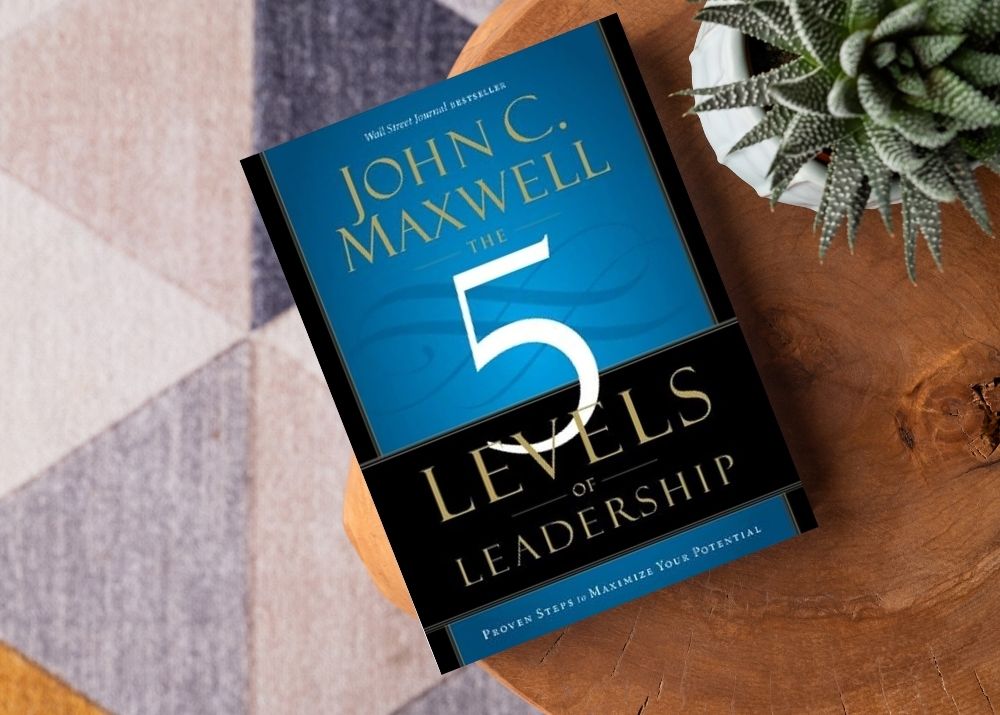Book Review of Five Levels of Leadership by John C. Maxwell

Executive Summary
In "The Five Levels of Leadership," John C. Maxwell presents a framework for understanding and enhancing leadership skills through five distinct levels. Each level builds upon the previous one, offering a comprehensive guide for leaders aiming to advance their effectiveness and influence. Maxwell emphasises the importance of personal growth, mutual respect, and the commitment to developing others. This book is not just a guide for leaders at any stage in their careers; it provides invaluable insights into building engaged teams and fostering a positive organisational culture. Implementing Maxwell’s principles alongside Marcher Leadership training can significantly elevate leadership effectiveness in any organization.
Introduction
John C. Maxwell stands out as a leadership authority, with numerous bestselling books and a devoted following across various sectors. In "The Five Levels of Leadership," he articulates a systematic approach to leadership, positing that effective leaders must progress through defined stages. Each level represents a different type of influence and authority, guiding readers towards becoming more effective leaders not only in their professional lives but also in personal interactions. This review delves into each level while considering how Maxwell’s insights can be integrated into organisational leadership training programs, specifically through Marcher Leadership.
Leadership Level 1: Position
The first level of leadership is grounded in position. At this stage, individuals have authority solely based on their title or role within an organisation. Maxwell argues that people follow leaders at this level primarily because they have to, not because they want to. This level often results in minimal emotional commitment from team members, as the motivation is driven primarily by compliance rather than enthusiasm. Maxwell emphasises that effective leaders at this level must build trust and credibility, as these traits lay the groundwork for progression to higher leadership levels. Importantly, the key takeaway here is that positional authority is not sufficient; it is crucial to cultivate relationships that transcend mere title recognition.
Leadership Level 2: Permission
The second level, permission, revolves around fostering relationships and securing trust. Here, leaders earn the right to lead by establishing genuine connections with their followers. At this stage, people choose to follow their leader out of respect and friendship.
Maxwell highlights that leaders must listen actively and demonstrate empathy to genuinely connect with their teams. This level is significant because it allows for collaboration and effective communication within the organisation. Leaders who operate at this level can inspire their teams, leading to greater engagement and morale. As Maxwell points out, creating a positive team culture hinges on this foundation of mutual respect and understanding.
Leadership Level 3: Production
Moving to the third level, production, Maxwell identifies this stage as critical for generating results and achieving goals. Leaders at this level have proven their effectiveness by inspiring their teams to accomplish high standards. Production leaders are task-oriented and lead by example, demonstrating a passion for achieving objectives. This level also emphasises the importance of mentoring and group dynamics, as successful leaders empower others to contribute actively to the team’s success. Maxwell notes that leaders must continue to build trust and relationships while promoting accountability and results. The transition to this level requires a balance of empathy and goal orientation, ensuring both individual and team success.
Leadership Level 4: People Development
At the fourth level—people development—leaders focus on cultivating and empowering others to grow in their roles. Maxwell argues that true leadership goes beyond personal achievement; it encompasses developing the capabilities of others. Leaders at this level invest time and resources into training and mentoring their team members, fostering an environment where individuals can thrive. This stage is characterised by loyalty and commitment from followers; the teams feel appreciated and see their leader as a catalyst for their development. Maxwell stresses the importance of a leader’s role in succession planning and ensuring that the organisation has capable individuals ready to step up when needed. This level is critical for long-term organisational sustainability and growth.
Leadership Level 5: Pinnacle
The fifth and final level, pinnacle, is the apex of leadership. Leaders who reach this level have a profound impact on their organisations and beyond. They are not only respected leaders but also inspiring figures whose influence extends throughout their industries and communities. At the pinnacle level, leadership embodies legacy; individuals appreciate the leader's guidance and contribution to their personal and professional lives. Maxwell suggests that attaining this level requires years of experience, and while not everyone will reach this stage, it is essential for leaders to aim high and strive for excellence. Pinnacle leaders continuously reinvest in their peers and mentors, illustrating the ongoing journey of leadership growth and development.
Conclusion
In conclusion, John C. Maxwell’s "The Five Levels of Leadership" serves as a powerful framework for understanding leadership development. By progressing through the
defined levels, leaders can cultivate deeper relationships, drive results, and develop their team members. Organisations can greatly benefit from integrating Maxwell’s insights into their leadership training programs, particularly through initiatives offered by Marcher Leadership. By aligning the Five Levels of Leadership with structured training, organisations can empower their leaders to enhance their effectiveness and influence, thereby fostering a culture of growth and mutual respect. Such an approach not only improves individual leadership skills but also the leadership effectiveness, productivity and growth of organisations.
I urge you to read this book, for yourselves, your current and aspiring leaders, and for your businesses. It will prove a simple and yet powerful investment.
